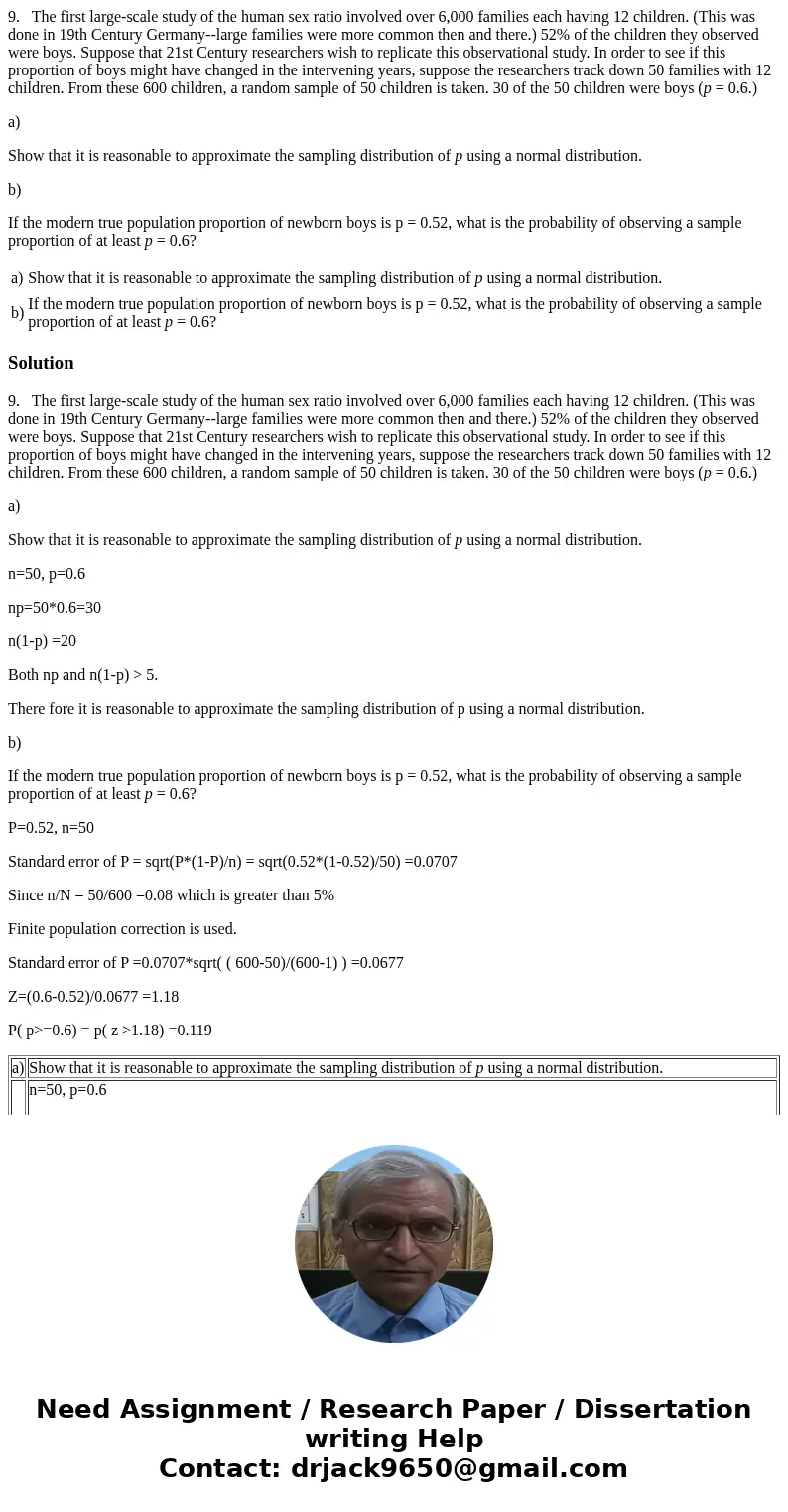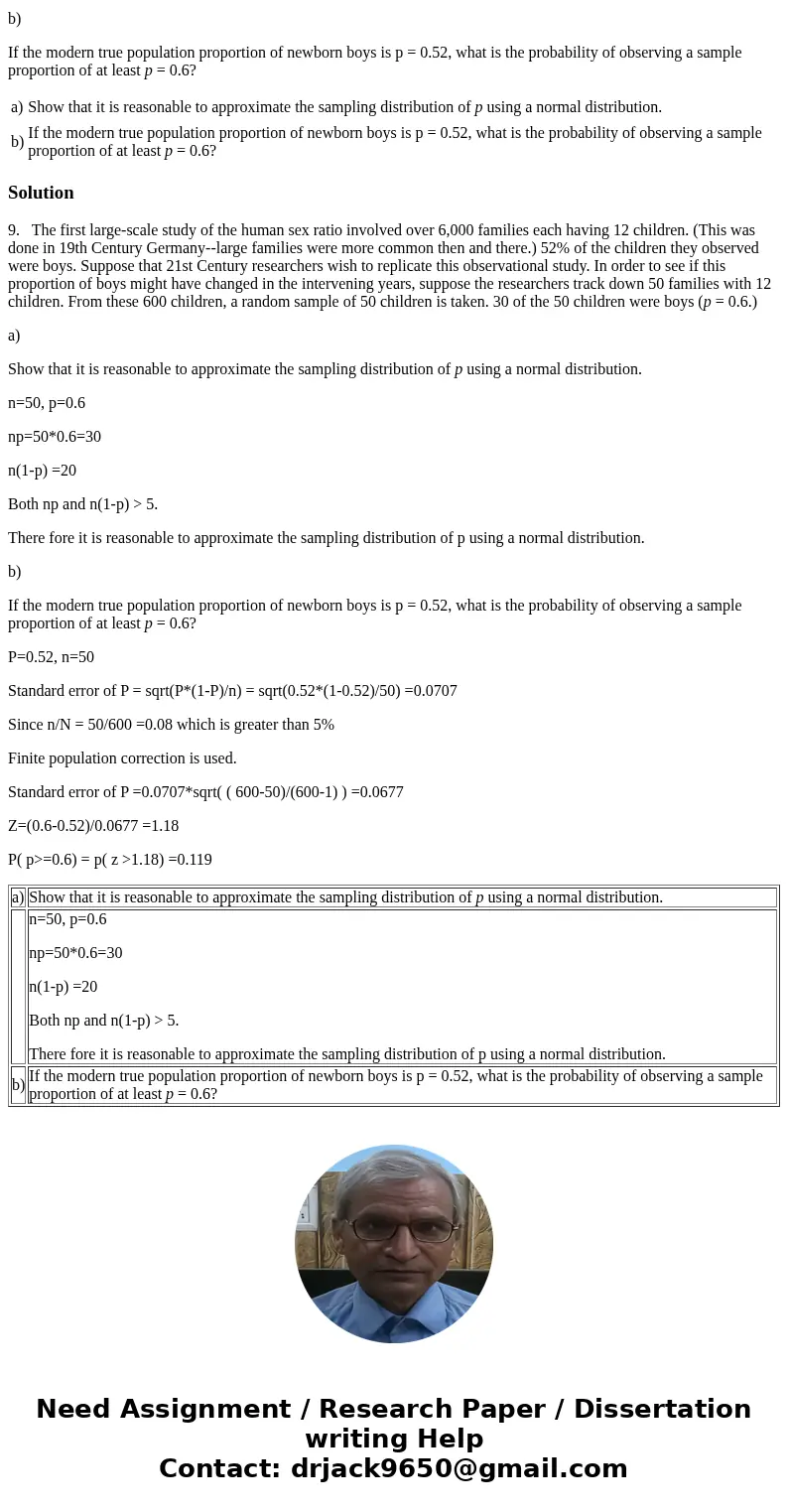9 The first largescale study of the human sex ratio involved
9. The first large-scale study of the human sex ratio involved over 6,000 families each having 12 children. (This was done in 19th Century Germany--large families were more common then and there.) 52% of the children they observed were boys. Suppose that 21st Century researchers wish to replicate this observational study. In order to see if this proportion of boys might have changed in the intervening years, suppose the researchers track down 50 families with 12 children. From these 600 children, a random sample of 50 children is taken. 30 of the 50 children were boys (p = 0.6.)
a)
Show that it is reasonable to approximate the sampling distribution of p using a normal distribution.
b)
If the modern true population proportion of newborn boys is p = 0.52, what is the probability of observing a sample proportion of at least p = 0.6?
| a) | Show that it is reasonable to approximate the sampling distribution of p using a normal distribution. |
| b) | If the modern true population proportion of newborn boys is p = 0.52, what is the probability of observing a sample proportion of at least p = 0.6? |
Solution
9. The first large-scale study of the human sex ratio involved over 6,000 families each having 12 children. (This was done in 19th Century Germany--large families were more common then and there.) 52% of the children they observed were boys. Suppose that 21st Century researchers wish to replicate this observational study. In order to see if this proportion of boys might have changed in the intervening years, suppose the researchers track down 50 families with 12 children. From these 600 children, a random sample of 50 children is taken. 30 of the 50 children were boys (p = 0.6.)
a)
Show that it is reasonable to approximate the sampling distribution of p using a normal distribution.
n=50, p=0.6
np=50*0.6=30
n(1-p) =20
Both np and n(1-p) > 5.
There fore it is reasonable to approximate the sampling distribution of p using a normal distribution.
b)
If the modern true population proportion of newborn boys is p = 0.52, what is the probability of observing a sample proportion of at least p = 0.6?
P=0.52, n=50
Standard error of P = sqrt(P*(1-P)/n) = sqrt(0.52*(1-0.52)/50) =0.0707
Since n/N = 50/600 =0.08 which is greater than 5%
Finite population correction is used.
Standard error of P =0.0707*sqrt( ( 600-50)/(600-1) ) =0.0677
Z=(0.6-0.52)/0.0677 =1.18
P( p>=0.6) = p( z >1.18) =0.119
| a) | Show that it is reasonable to approximate the sampling distribution of p using a normal distribution. |
| n=50, p=0.6 np=50*0.6=30 n(1-p) =20 Both np and n(1-p) > 5. There fore it is reasonable to approximate the sampling distribution of p using a normal distribution. | |
| b) | If the modern true population proportion of newborn boys is p = 0.52, what is the probability of observing a sample proportion of at least p = 0.6? |


 Homework Sourse
Homework Sourse